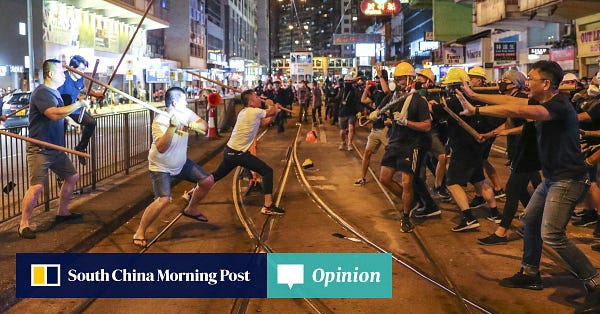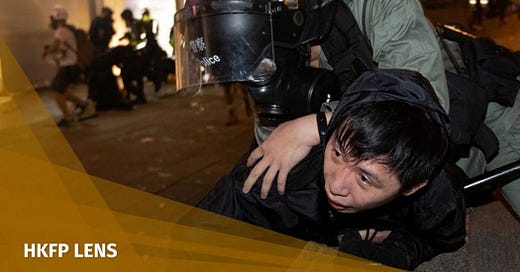Adam Ni, China researcher at Macquarie University in Sydney.
Email (contact@adamni.com) | Whatsapp (+61 40 6262 666) | Signal (+49 151 72059984)
Since the start of mass protests in HK in early June, I’ve been asked repeatedly about Beijing’s HK strategy. For weeks, I have said that Beijing is scrambling to come up with an effective response. This has changed. Over the last weeks, a full picture of this strategy has emerged.
What is Beijing’s goal? Short term: end the continuing escalation of mass protests, through force if necessary. Long term: tighten political control over HK, bringing and assimilating the city and its people into the fold of the PRC’s political system. Essentially, Beijing wants to control HK and its people in the same way as it does the rest of the country.
There are six elements to Beijing’s HK strategy:
Provide strong support to the HK Government and Police to enable and encourage tougher tactics against protesters. Already, we are seeing rising police violence:
Ramp up united front efforts vis-a-vis HK business, pro-establishment elite, and other “patriotic forces” in support of Beijing’s agenda. For example, on Thursday (Aug 8), State Council’s HK and Macau Affairs Office 国务院港澳办 and the Central Government’s HK Liaison Office 中央政府驻港联络办 jointly held a consultation forum with pro-establishment figures. The key message was that Beijing was fully behind them and that their fate was tied to Beijing. How this kind of efforts manifest on-the-ground in HK? Here are two recent examples - with respect to business elite and organised crime:




Step up information operations (propaganda, misinformation) and rhetorical efforts to galvanise public support in mainland China as well as to influence international public opinion. Since the start of mass protests, we have seen the escalation of Beijing’s rhetoric aimed at delegitimising and vilifying the protesters:


Cut off support for the protesters by institutions and companies through punitive measures. Beijing targeted Cathy Pacific in order to deliver a clear message: support HK protesters and we will hit your bottom line. Beijing will increasingly target HK and international companies that are on the wrong side of politics.


Deter escalating protests by signalling Beijing’s strong determination to intervene with force if necessary. Beijing has repeatedly implied that China’s armed forces will be used as a backstop. Beijing may at some point make the judgment that the situation warrant military intervention regardless of the high cost involved. But we are not at this point just yet.


Increase economic and connectivity integration efforts aimed at enmeshing HK tighter into the PRC economically. This would shift relative dependency further in favour of the mainland. High-speed trains, new bridges, and economic cooperation are all part of this long term effort.
What did Beijing learn from the past two months? Well, like 1989, the lesson seen from Beijing’s perspective is that democracy, civil freedoms and constrained government power lead to the loss of control and instability. In the short term, this means more united front efforts and public opinion operations. In the long run, this means tighter control of HK institutions, narratives/histories, identities, and the mediums of public discussion.
How is all this likely to play out? There is a fundamental mismatch between Beijing’s agenda to assert control and the preferences of HKers to keep their civil liberties. The party-state’s relentless political logic of control will continue to inform its HK policy and this will provoke further resistance. Beijing has a long term HK challenge on its hands, one that in many ways is of its own making.
I have followed the events in HK closely because its significance goes far beyond the city or China; it shows how the Chinese party-state interacts with other political models and pluralistic societies; it shows how China may act in the future on the international stage.




